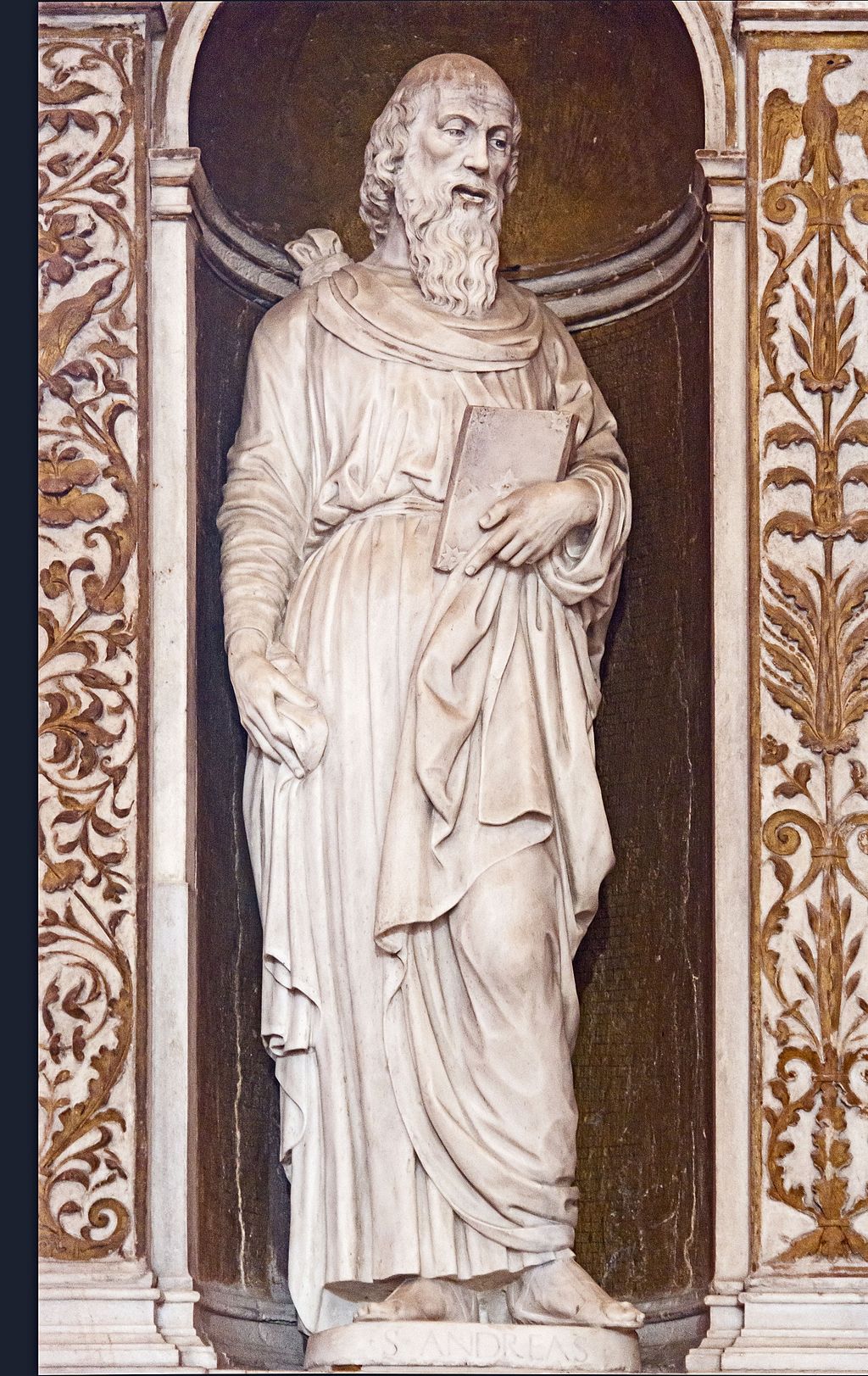
St Andrew is Scotland’s patron saint, but who was he? What did he do that was so saintly? And how did he become Scotland’s patron saint?
As we look forward to this year’s St Andrew’s Day celebrations, here is a little peek into his life, his work and the Scottish values that we celebrate on St Andrew’s Day.
St Andrew has been celebrated in Scotland for over one thousand years, with feasts being held in his honour as far back as the year 1000 AD.
However, it wasn’t until 1320, when Scotland’s independence was declared with the signing of The Declaration of Arbroath, that he officially became Scotland’s patron saint.
Since then, St Andrew has become an integral part of Scottish society. The flag of Scotland is the saltire, also known as St Andrew’s Cross, and the ancient town of St Andrews was named due to its claim of being the final resting place of St Andrew.
With so many different connections to our country, it’s worth considering how St Andrew came to be so important to Scotland.
The answer is surprisingly simple and sums up some of the most prominent characteristics that you can find in Scots both at home and abroad.
The story goes that Andrew, the Galilean fisherman who was singled out to be Christ's first disciple, preached the Gospel in the lands around the Black Sea and in Greece and was eventually crucified on an X-shaped cross in Patras.
St Andrew is the patron saint of other countries as well as Scotland. His association with Scotland, a land he never set foot on is, not surprisingly, based on several conflicting legends, the most colourful of which is the story of St. Rule.
Three hundred years after Andrew's martyrdom the Roman Emperor Constantine, himself a Christian, ordered that the saint's bones should be moved from Patras to his new capital city of Constantinople.
Before the order was carried out a monk called St. Rule (or St. Regulus) had a dream in which an angel told him to take what bones of Andrew's he could to 'the ends of the earth' for safe keeping.
St. Rule duly took what he could, presumably in a swift and frantic raid on the tomb, and after an epic journey with the aforementioned assortment was shipwrecked on the east coast of Scotland. He must have deemed that he had indeed reached the 'ends of the earth'!
Over a millennium later St. Rule's Tower still stands among the ruins of St. Andrew's Cathedral, which in its heyday was a great centre of Medieval pilgrimage.
But the whereabouts of the relics are unknown. They were probably destroyed in the Scottish Reformation.
During his visit in 1969, Pope Paul VI gave further relics of St. Andrew to Scotland with the words "St Peter gives you his brother" and these are now displayed in a reliquary in St Mary's Catholic Cathedral in Edinburgh. But what these comprise is not recorded.

He has struck a chord with the Scots for thousands of years and anyone who has visited Scotland can vouch that his spirit is still alive here today. If you’re lost, many Scots are happy to point you in the right direction.
In fact, Scotland is known around the world for its incredibly warm welcome and friendliness. It’s one of the many things that keeps people coming back to visit.
Scotland's desire to help those who are less fortunate is highlighted in the many social enterprises that are thriving across the country. You only have to look at the amazing success of companies like Social Bite, who are pioneering charitable causes in an unprecedented way.
They’re not the only ones, as Scotland is home to more than 6000 social enterprises, adding billions of pounds to the Scottish economy every year.
All these incredible companies are dedicated to providing an ethical and more sustainable way of doing business and working towards creating a fairer world.
Despite the fact that St Andrew has stood as Scotland’s patron saint for so many years, it wasn’t until the 18th century that the popular celebration of his day became commonplace.
What might surprise you even more is that the tradition of celebrating on 30 November was not started in Scotland, but by a group of Scots in the USA who were keen to reconnect with their Scottish roots.
It all began with the creation of the ‘St Andrew’s Society of Charleston’ in South Carolina, which was founded in 1729 by a group of wealthy Scottish immigrants.
The organisation is the oldest Scottish society of its type in the world. They became famous throughout the region for their work assisting orphans and widows in that area.
This was followed by another society, this time in New York, which was founded in 1756. ‘The St Andrew’s Society of the State of New York’ is the oldest charity of any kind registered in New York and was founded by Scotsmen who were looking to relieve the poor and distressed in the town. From these first organisations, St Andrew’s societies have spread around the world.
Recently, St Andrew’s Day has become more special to Scots and is celebrated each year on 30 November, and people across the country gather to celebrate St Andrew and share good times.
The day is usually marked with a celebration of Scottish culture, including dancing, music, food and drink, with parties going on long into the cold winter night.
Find out more about ways to celebrate St Andrew's Day